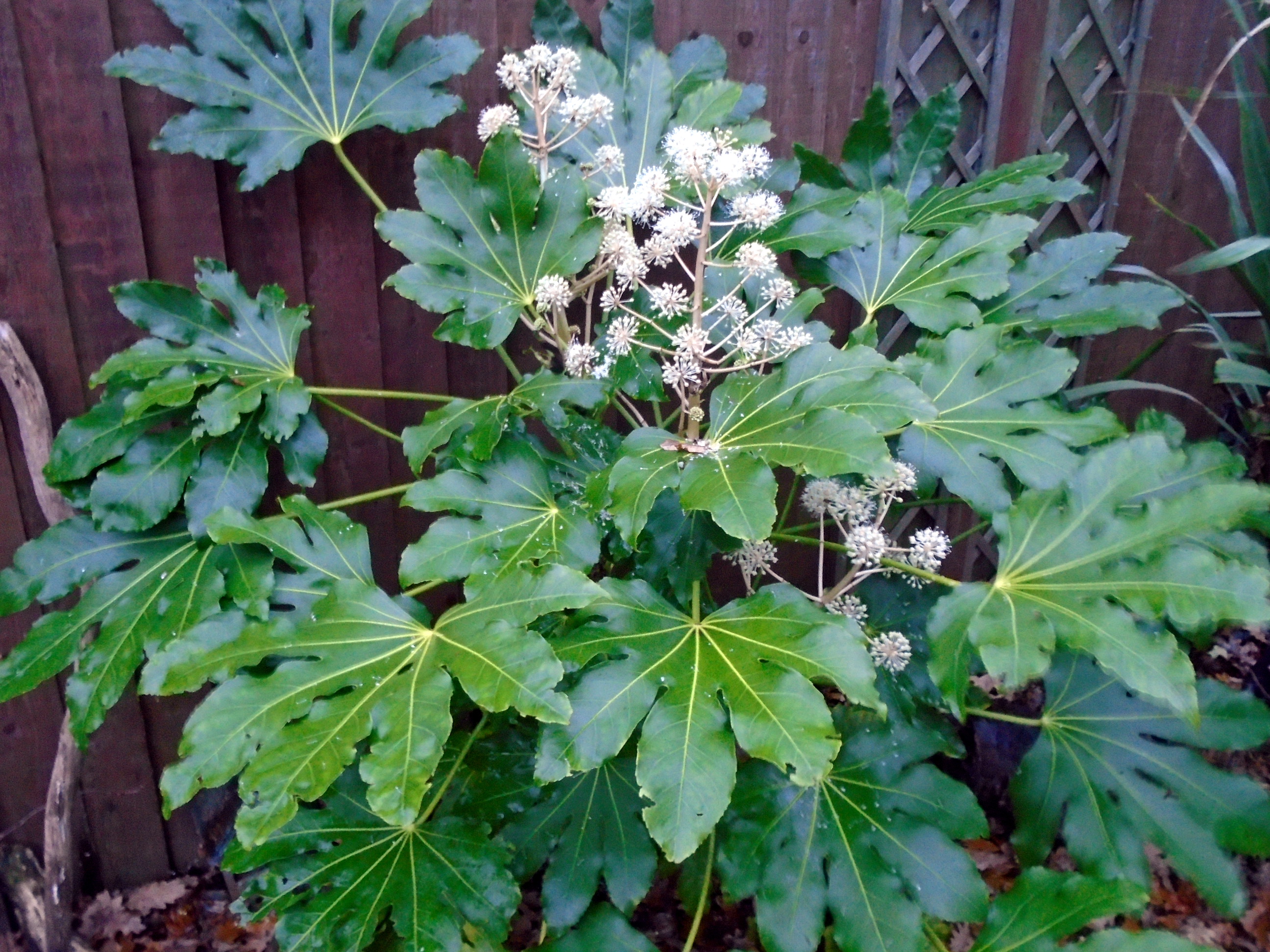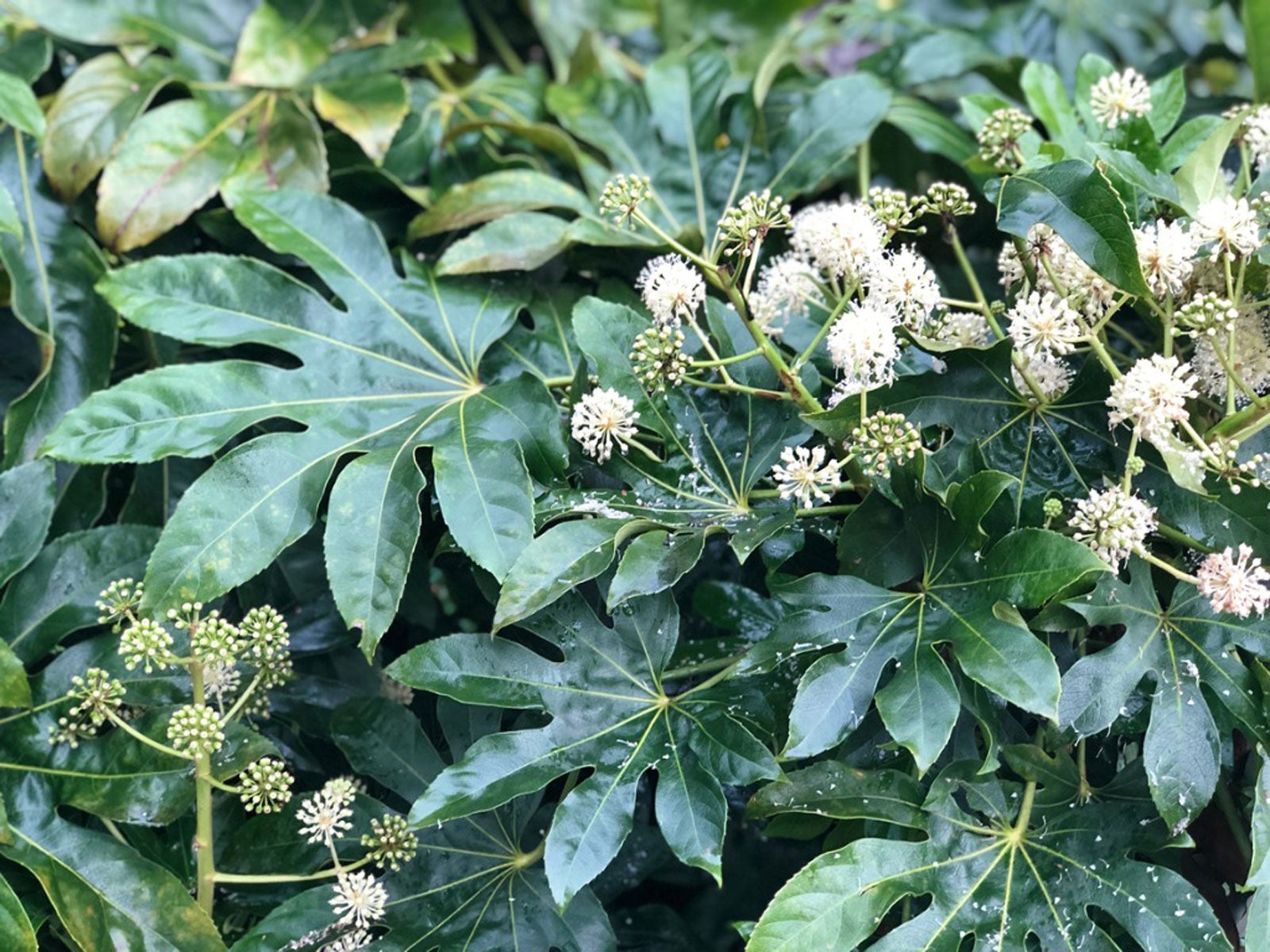“`html
Fatsia Japonica: The Hardy Elegance of the Japanese Aralia
body {
font-family: sans-serif;
line-height: 1.6;
margin: 20px;
}
h2, h3 {
color: #333;
margin-top: 25px;
}
p {
margin-bottom: 15px;
}
img {
max-width: 100%;
height: auto;
display: block;
margin: 20px auto;
}
Fatsia Japonica: The Hardy Elegance of the Japanese Aralia

Fatsia japonica, commonly known as the Japanese Aralia, is a captivating evergreen shrub that brings a touch of tropical elegance to both indoor and outdoor spaces. With its large, glossy, palmate leaves and robust nature, it’s a popular choice for gardeners and interior decorators alike. This comprehensive guide will delve into the various aspects of Fatsia japonica, from its botanical origins and characteristics to its cultivation, care, and diverse applications.
Botanical Origins and Characteristics
Fatsia japonica belongs to the Araliaceae family, which also includes other well-known plants like ivy and ginseng. Native to southern Japan, it thrives in shaded, woodland environments, which explains its preference for partial to full shade in cultivation. The plant’s most striking feature is its large, deeply lobed leaves, which can grow up to 12 inches in diameter. These leaves are typically a rich, dark green, creating a lush, tropical appearance.
Leaf Morphology
The leaves of Fatsia japonica are palmate, meaning they resemble the shape of an open hand. Each leaf is divided into 7-9 lobes, giving it a distinctive, star-like appearance. The glossy texture and prominent veins add to its visual appeal. In some cultivars, the leaves may exhibit variegation, with creamy white or yellow margins or patterns, enhancing their ornamental value.
Flowering and Fruiting

In late autumn or early winter, mature Fatsia japonica plants produce clusters of small, white flowers arranged in spherical umbels. These flowers, while not particularly showy, add a delicate touch and attract pollinators. Following flowering, the plant develops small, black berries that persist into the winter. These berries are not typically eaten and are primarily ornamental.
Growth Habit
Fatsia japonica is a relatively slow-growing shrub, typically reaching a height of 3-6 feet indoors and up to 10 feet outdoors. Its upright, spreading growth habit makes it suitable for various landscaping and interior design applications. The plant’s sturdy stems and large leaves give it a robust and substantial presence.
Cultivation and Care

One of the key advantages of Fatsia japonica is its adaptability and ease of care. Whether grown indoors or outdoors, it requires minimal maintenance to thrive. Understanding its specific needs will ensure healthy growth and a vibrant appearance.
Light Requirements
Fatsia japonica prefers partial to full shade. Direct sunlight, especially during the hottest parts of the day, can scorch its leaves. Indoors, it thrives in bright, indirect light. An east- or north-facing window is ideal. Outdoors, it should be planted in a location that receives filtered sunlight or shade for most of the day.
Soil and Watering
The plant prefers well-draining soil that is rich in organic matter. A mixture of potting soil, peat moss, and perlite or sand is suitable for container planting. Outdoors, amend the soil with compost or well-rotted manure to improve drainage and fertility. Watering should be regular, especially during the growing season. Allow the top inch of soil to dry out before watering again to prevent root rot. In winter, reduce watering as the plant’s growth slows down.
Temperature and Humidity
Fatsia japonica is relatively tolerant of a wide range of temperatures, but it prefers moderate conditions. Indoors, it thrives in typical room temperatures between 60-75°F (15-24°C). Outdoors, it can withstand temperatures as low as 20°F (-6°C) for short periods. However, prolonged exposure to freezing temperatures can damage the plant. It appreciates moderate to high humidity. Indoors, you can increase humidity by misting the leaves regularly or placing the plant on a pebble tray filled with water.
Fertilization
Feed Fatsia japonica with a balanced liquid fertilizer every 4-6 weeks during the growing season (spring and summer). Avoid over-fertilizing, as this can lead to excessive salt buildup in the soil. In winter, reduce or stop fertilizing as the plant enters a period of dormancy.
Pruning and Maintenance
Pruning is generally not necessary for Fatsia japonica, but you can trim the plant to maintain its shape or remove any dead or damaged leaves. Pinching back the tips of young plants can encourage bushier growth. Regularly inspect the plant for pests and diseases, and take appropriate action if necessary.
Repotting
Repot Fatsia japonica every 2-3 years, or when it outgrows its current container. Choose a slightly larger pot and use fresh potting mix. Repotting is best done in spring or early summer. Ensure that the new pot has adequate drainage holes.
Propagation
Fatsia japonica can be propagated through several methods, including seed propagation, stem cuttings, and air layering.
Seed Propagation
Seed propagation is a relatively slow process. Sow seeds in spring in a well-draining seed-starting mix. Keep the soil consistently moist and provide warmth and bright, indirect light. Germination can take several weeks to months. Seed propagation is less common than other methods due to the slow growth.
Stem Cuttings
Stem cuttings are a more reliable method of propagation. Take 4-6 inch cuttings from healthy stems in spring or summer. Remove the lower leaves and dip the cut end in rooting hormone. Plant the cuttings in a moist potting mix and cover them with a plastic bag or dome to maintain humidity. Place the cuttings in a warm, bright location, but avoid direct sunlight. Roots should develop within a few weeks.
Air Layering
Air layering is another effective method for propagating Fatsia japonica. Select a healthy stem and make a shallow cut about halfway through the stem. Apply rooting hormone to the cut area and wrap it with moist sphagnum moss. Cover the moss with plastic wrap and secure it with tape. Roots should develop within a few weeks. Once the roots are visible, cut the stem below the rooted area and pot the new plant.
Pests and Diseases
While Fatsia japonica is generally a hardy plant, it can be susceptible to certain pests and diseases.
Common Pests
Common pests that may affect Fatsia japonica include spider mites, aphids, and scale insects. These pests can be controlled by spraying the plant with insecticidal soap or neem oil. Regularly inspect the plant for signs of infestation and take prompt action.
Common Diseases
Root rot is a common problem caused by overwatering or poor drainage. To prevent root rot, ensure that the soil is well-draining and avoid overwatering. Fungal diseases can also occur in humid conditions. Ensure good air circulation around the plant and avoid overhead watering.
Uses and Applications
Fatsia japonica’s versatility makes it a popular choice for various applications, both indoors and outdoors.
Indoor Decor
Fatsia japonica is an excellent choice for adding a touch of tropical elegance to indoor spaces. Its large, glossy leaves create a striking focal point in living rooms, hallways, and offices. It thrives in low-light conditions, making it suitable for rooms with limited natural light. It also helps to purify the air, improving indoor air quality.
Outdoor Landscaping
In outdoor landscapes, Fatsia japonica is often used as a specimen plant or in shaded borders. It adds a lush, tropical feel to gardens and courtyards. It is also suitable for planting under trees or in other shaded areas. Its tolerance of urban pollution makes it a good choice for city gardens.
Container Gardening
Fatsia japonica is well-suited for container gardening, allowing it to be grown on patios, balconies, and terraces. Its robust growth habit and attractive foliage make it a standout feature in container arrangements.
Cut Foliage
The large, glossy leaves of Fatsia japonica are often used in floral arrangements and bouquets. They add a touch of drama and texture to floral displays and can last for several weeks in water.
